Dante's Inferno
The Inferno begins on Good Friday in the year 1300. The poet, 35 years old, has reached middle age according to the standards of the time. He is lost in a deep wood, and unable to find the straight path and harried by allegorical depictions of sin and temptation.
Realizing that he is facing ruin, Dante contemplates suicide, but he is rescued by the spirit of the poet Virgil who conducts him on a journey through Hell. When he enters the gates of hell, Dante sees the famous line "Abandon all hope, ye who enter here". And that is indeed the chief punishment of all the inhabitants of the Inferno: they have no hope of salvation, no hope of release, no hope of any improvement or escape from their punishments.
Virgil guides Dante through the nine circles of Hell. The circle of Hell are concentric. Each deeper level holds worse sinners and greater punishments. The deepest circle of Hell is at the center of the Earth and it is here that the chief sinner, Satan, is held bound in a lake of ice for all eternity.
The sinners that Dante encounters in the Inferno are each punished in a fashion befitting their crime. The most severe punishments are reserved for the residents of the lower depths of Hell.
Later, in his journey to Purgatory, Dante will encounter more sinners. But the sinners in Hell are very different from those in Purgatory; these sinners are not repentent and justify their sins. In their conversations with Dante, the afflicted souls of Hell attempt to justify what they did on earth. Despite their punishments they cannot feel remorse. The residents of Hell also have no knowledge of the present; they can only remember the past. This means that when the Final Judgment comes and time is extinguished they will be consigned to oblivion.
The sinners in Hell are all guilty of one or more of the seven deadly sins. Four of of the circles of hell are devoted to punishing these sins in their varous manifestations. (Circle 2-lust, 3-gluttony, 4-greed, 5-wrath). The remaining circles do not correspond exactly to the seven deadly sins.
The nine circles of Dante's inferno were illustrated by Gustave Dore in a series of classic engravings, which are presented here in full.
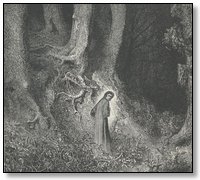 |
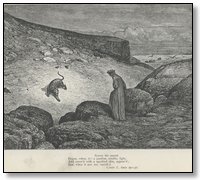 |
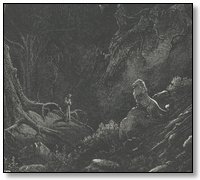 |
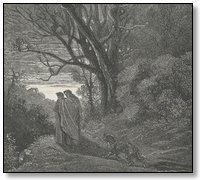 |
| a gloomy wood | a panther, nimble, light, And cover'd with a speckled skin, appear'd | With his head held aloft and hunger-mad | From out that savage wilderness |
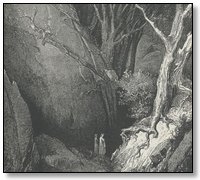 |
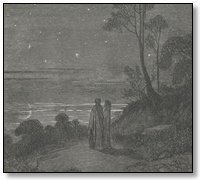 |
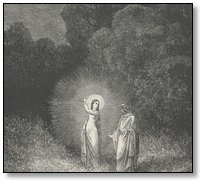 |
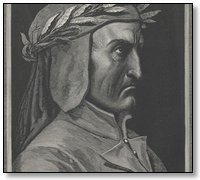 |
| in such dismal plight | that perilous road | I enter'd on the deep and woody way. | Portrait of Dante Alighieri |
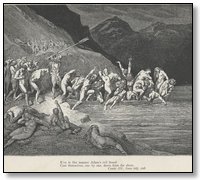 |
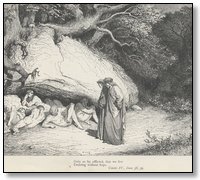 |
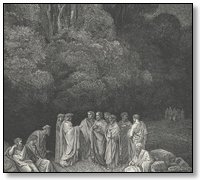 |
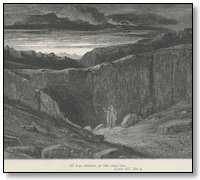 |
| All hope abandon ye who enter here | Desiring without hope | Who sets the world at chance | New torments, new tormented souls |
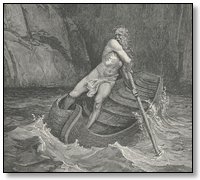 |
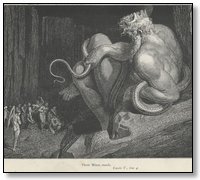 |
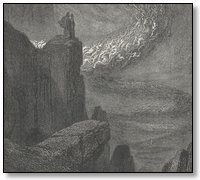 |
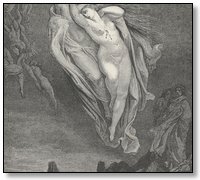 |
| Woe to you wicked spirits! hope not Ever to see the sky again. | Gives sentence, and dismisses them beneath | When they arrive before the ruinous sweep | by that love which carries them along |
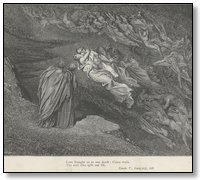 |
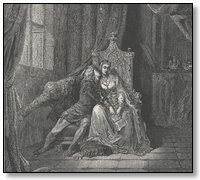 |
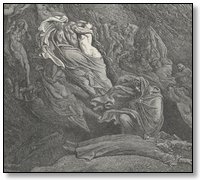 |
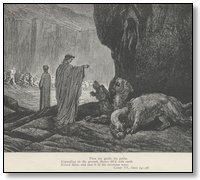 |
| Love brought us to one death | Dante's Inferno: 1705.jpg | Dante's Inferno: 1805.jpg | Dante's Inferno: Hell |
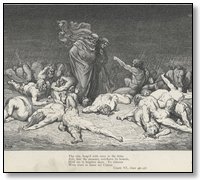 |
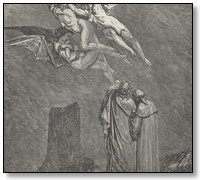 |
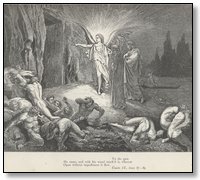 |
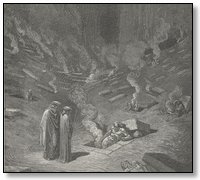 |
| Upon their emptiness, that substance seem'd | cruel monster, fierce and strange | Dante's Inferno: 2209.jpg | Dante's Inferno: 2309.jpg |
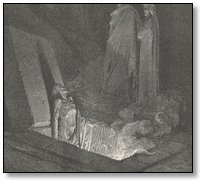 |
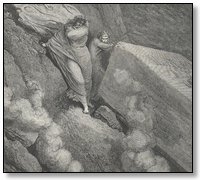 |
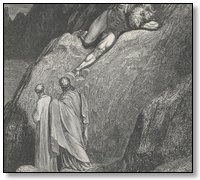 |
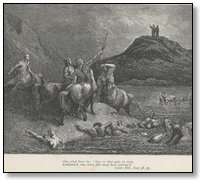 |
| Dante's Inferno: 2410.jpg | Dante's Inferno: 2711.jpg | Dante's Inferno: 2812.jpg | Dante's Inferno: 2912.jpg |